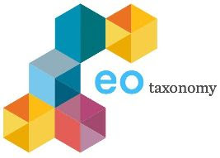This page provides the top-level structure for the breakdown (taxonomy) of the EO Services markets. There are 22 market sectors identified grouped into 6 categories (titles on the tabs) organised according to the EARSC Taxonomy. The information is organised by:
- Market Sector: this defines the area of the market for which EO services apply.
- Composition: gives examples of the types of organisation that make up the market sector. It helps define the sector.
- EO Services: each EO service is unique within the thematic services taxonomy but may apply in several different market segments. For each EO service, there may be many specific products which are being offered and which are described in a section on the application service page.
Managed Living Resources
Market Sector | Composition | EO Services |
|---|---|---|
Agriculture | Agricultural commodities/trading, The EO/GI users also include agriculture and rural policy makers and insurers. | Assess environmental impact of farming Assess crop damage due to storms Monitor crop disease and stress Assess crop acreage and yield harvest Monitor water use on crops and horticulture |
Forestry | Forest management, | Assess deforestation / forest degradation Assess environmental impact of forestry Assess forest damage due to storms or insects |
Fisheries | Fish stock management, | Detect and monitor illegal fishing |
Energy & Mineral Resources
Infrastructure & Transport
Market Sector | Composition | EO Services |
|---|---|---|
Utilities & Supplies | Power station operators, | Monitor pollution in rivers and lakes Assess changes in the carbon balance Assess environmental impact of human activities Assess and monitor water quality |
Construction | Construction companies, | Monitor building development Assess environmental impact of human activities Detect land movement, subsidence, heave |
Transport & Logistics | Road transport operators, | Assess environmental impact of human activities Detect land movement, subsidence, heave Assess changes to urban and rural areas Assess and monitor volcanic activity |
Marine & Maritime | Ports & harbors administration, | Monitor water quality and productivity Detect and monitor ice-risk at sea Monitor ice free passages for ships Forecast and monitor ocean movement and drift |
Communications & Connectivity | Construction companies, | Monitor building development Assess changes to urban and rural areas |
| Travel & Tourism | Tour operators, |
Financial & Digital Services
Market Sector | Composition | EO Services |
|---|---|---|
Insurance & Real Estate | Primary insurance companies, | Assess crop damage due to storms Assess damage from earthquakes Detect land movement, subsidence, heave |
Retail & Geo-marketing | Navigation and LBS, | Assess land value, ownership, type, use Map urban areas |
News & Media | Television companies, | Assess damage from earthquakes Detect sensitive risk areas |
| ICT, Knowledge & Digital Interfaces | Fixed and mobile telecommunications providers | |
Travel, Tourism and Leisure | Tour operators, | Monitor pollution in rivers and lakes Assess changes in land use and quality |
Defence & Security
Market Sector | Composition | EO Services |
|---|---|---|
Emergency & Social Protection | Coast guards, | Forecast and assess landslides Assess and monitor volcanic activity |
Security, Defence & Military | Border control organisations, | Monitor land border incursions Detect sensitive risk areas |
| Humanitarian Operations | Humanitarian aid and support organisations such as: European level (DG RELEX; DG ECHO, DG ENV / MIC), | Detect sensitive risk areas Map disaster areas (Situation Awareness) Monitor water use on crops and horticulture Monitor humanitarian movement and camps Assess pressures on populations and migration Monitor air quality |
Environmental, Climate & Health
Market Sector | Composition | EO Services |
|---|---|---|
Environmental Ecosystems & Pollution | Coast guards, | Assess environmental impact of farming Monitor air quality Assess Change in the carbon balance Assess crop acreage and yield harvest Assess environmental impact of human activities Monitor water use on crops and horticulture Assess land value, ownership, type use etc Assess changes in land use and quality Assess dredging operations impacts Detect and monitor ice-risk at sea Forecast and monitor ocean movement and drift |
| Health Care | Public administration personnel, | |
Meteo & Climate | Meteorologists in range of downstream applications. |
Urban Development
Market Sector | Composition | EO Services |
|---|---|---|
Local & Regional Planning | Spatial planning departments of municipalities, | Monitor pollution in rivers and lakes Assess land value, ownership, type, use Assess changes in land use and quality Detect land movement; subsidence, heave Assess pressures on populations and migration Assess changes to urban and rural areas Map urban areas |
| Smart Cities | Urban planners, architects, spatial planning offices, urban policy makers. | Monitor pollution in rivers and lakes Assess land value, ownership, type, use Assess changes in land use and quality Detect land movement; subsidence, heave Assess pressures on populations and migration Assess changes to urban and rural areas Map urban areas |
Citizens & Society
Market Sector | Composition | EO Services |
|---|---|---|
| Consumer Solutions | Mobile devices, | |
| Leisure | People oriented to basic public understanding on EO services for their leisure activities. | |
| Education, Training & Research | Schools and education authorities, | Assess changes in the carbon balance Assess changes to urban and rural areas |


This page has no comments.